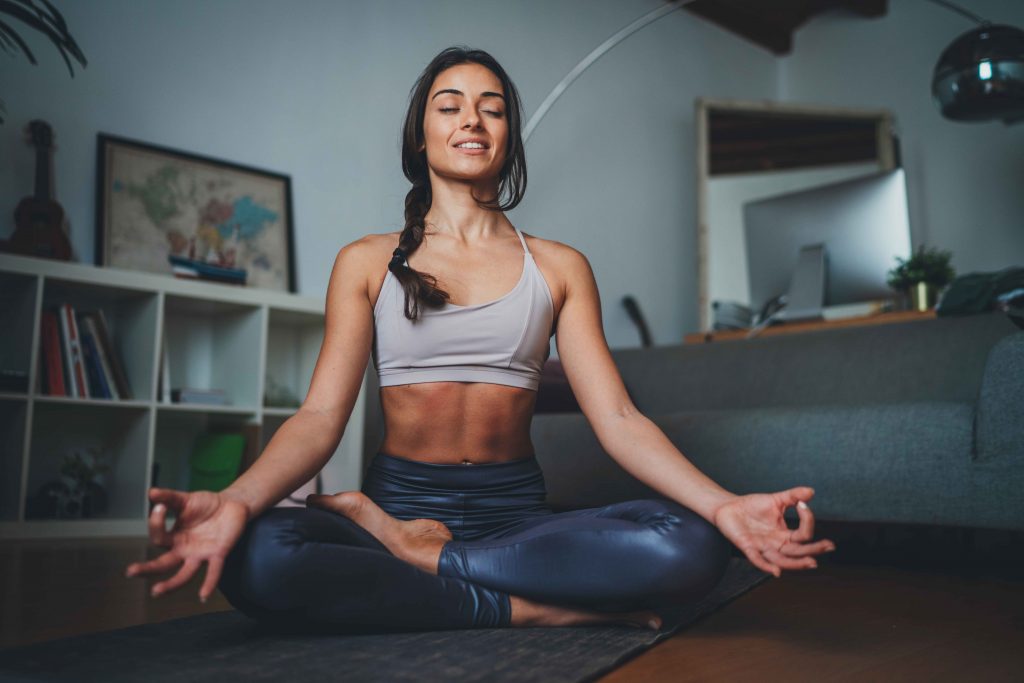
What is the best type of meditation?
It depends on a variety of things, including your lifestyle and level of stress. Meditation, in general, offers a stressed-out world time for heightened awareness, relaxation, and a sense of calm.
Today, though, we want to look at the most popular types of meditation out there. Remember, there is no right or wrong way to meditate.
Feel free to explore different types of meditation until you find what makes you feel most comfortable. Let’s dive into our guide on the 8 types of meditation and how to master each.
The Importance of Meditation
First, one needs to understand the importance of meditation. More than just clear your mind it can bring you an overwhelming sense of calm, balance, and peace. This benefits your overall health, including your emotional wellbeing.
Consistent meditation has been shown to help one better manage certain health conditions and maintain their calm more throughout their day.
You can enjoy the benefits of meditation, too, when you add it into your daily routine. Consistency is the key to so many things in life, and meditation is certainly one of those things.
8 Types of Meditation
Now, let’s look over the 8 most popular types of meditation. We’ll touch on not just the type of meditation itself, but also how to master each of them.
Likewise, we’ll show you which type of meditation is best suited for which type of person, since everyone is different.
Mindfulness Meditation
Possibly the most popular type of meditation in this day and age, mindfulness meditation is a powerful tool on its own.
Those that practice meditation use it to remain aware and present at the moment instead of drifting off to relaxation.
Mindfulness encourages awareness of your existing surroundings rather than have you dread the future or dwell on the past.
It’s also a meditation practice people can do just about anywhere.
Whether you’re standing in line at the grocery store, on a bus ride, in the comfort of your own home, or anywhere in between, you can be more mindful. Calmly notice your surroundings.
Pay attention to what you’re smelling, hearing, seeing, and experiencing. Mindfulness is a theme used in many other types of meditation. Breath awareness is invaluable.
Transcendental Meditation
A classic type of meditation, transcendental meditation is a more spiritual form of practice. It’s a practice where you stay seated and breathe slowly. All the while, your goal is to rise above your current state of being. In other words, you transcend.
People who take on this type of meditation report feeling a heightened level of mindfulness. Likewise, they report experiencing more in tune with their spirituality.
If this is something that piques your interest, this may be the type of meditation for you to try out first.
When doing this type of meditation, it’s common to have a teacher. The teacher helps determine the repeated word or series of words.
This is also known as your “mantra.” Your teacher will help you determine your mantra, often based on a complex set of factors.
Alternatively, you can choose your mantra. If you don’t have your own teacher or feel confident trying it out on your own, this might be your go-to.
This is technically a more contemporary version of meditation compared to transcendental, but it’s similar enough.
In more traditional forms of transcendental meditation, “Aham Prema” is a well-known mantra. It’s what helps beginners start achieving a connection to the sanctity of love. In addition, it helps one achieve a state of deeper reflection.
This form of meditation, with enough practice, can help one’s mind, spirit, and heart calmer and more peaceful.
Zen Meditation
Also called Zazen, zen meditation is a form that’s part of Buddhist practice. Oftentimes this version of meditation is done under a teacher, as it requires specific postures and steps at the right times.
Similar to mindfulness meditation, zen meditation requires far more practice and discipline. It’s why a teacher is recommended.
For those that are seeking a new spiritual path, enlightenment of some kind, or even just a sense of relaxation, this might be the meditation for you.
To practice, it’s important to understand the overall goal of zen meditation. Ultimately, you want to observe your thoughts without judgment.
Get into a comfortable position, breathe deeply, and focus on that deep breathing. Mindfully, start to observe the thoughts that wander through your head.
Inevitably, something may be clouding your head, or keep coming back into the forefront of your mind. Let these thoughts take over, mindfully observe them, and then allow them to pass by peacefully.
Kundalini Yoga
As you can imagine the name might imply, kundalini yoga is a more active form of meditation. It blends movements, mantras, and deep breathing into one fluid practice.
Just like other meditation types, we’ve mentioned, a teacher or even a class is often recommended. At least as a beginner, learning how to do the mantras, poses, and other techniques before you do it at home may be the most beneficial to your meditation growth.
However, one can learn on their own at home, especially with the internet at our disposal.
Similar to other types of yoga, this form of meditation can help improve your physical strength just as much as your mind. Improving your physical strength has been shown to reduce pain, too.
Likewise, it improves mental health, it may help reduce symptoms of depression and anxiety.
We look at a study in 2008 on veterans that suffer from chronic low-back pain. The veterans found that yoga offered improved mental health, increased energy, and reduced pain.
With other forms of meditation, we’ve already discussed breath and mantras. What you add alongside deep breathing and your mantras with kundalini yoga are kriyas. Kriya, which means “action,” is a sequence of breaths, sounds, hand positions, and stretches.
To practice Kundalini yoga yourself, you’d start with an opening chant. This is also called tuning in. It allows you to ground yourself to the earth and get into your meditation state.
Next, you’ll warm up with breathing exercises. Also known as pranayama, it’s just movements that help stretch your spine. Over time, this will help you practice your breath control more accurately.
After your warm-up is kriya, which is that sequence of movements and different poses or postures that we talked about. The intensity and length of this portion will depend greatly on your instructor. If you’re doing it by yourself, start small and work your way up.
Kriya is what allows your mind and body to go into the next step, which is relaxation to absorb everything.
Typically after this step, your teacher will guide you back through meditation. This helps you cultivate even further mindfulness and awareness.
Finally, your class or session will end with a closing chant. Practicing this regularly will help you become more in tune with yourself and more aware of others.
Breath Awareness Meditation
Another form of mindful meditation, breath awareness helps encourage more mindful breathing. It offers many of the same benefits as mindfulness.
This includes greater emotional flexibility and wellbeing, an improved sense of concentration, and reduced symptoms of anxiety.
The goal for this type of meditation is to solely focus on breathing. You’ll breathe deeply, slowly, and count each breath. If counting isn’t your cup of tea, simply breathing deep, slow, and repeatedly is sufficient.
Ignore other thoughts that enter your brain. Instead of observing them, try to cast them out. Simply focus only on breathing.
Over time, you’ll become much better at clearing your mind and focusing on breaths instead. It’s a practice that can help build tolerance, patience, and mindfulness in so many other aspects of your life.
Progressive Relaxation, Or, Body Scan
Body scan meditation, more commonly known as progressive relaxation, is a form of meditation that helps encourage people to scan their bodies and locate all areas of tension.
Not only does it teach you how to notice the tension, but it also gives you tools to learn how to release said tension.
Most forms of progressive relaxation help to promote feelings of relaxation and calm, while also helping with chronic pain as a happy side effect.
Some people also use this type of meditation to help them sleep easier. Since it slowly but steadily relaxes the body, one muscle at a time, we can see how this fits.
To practice body scan meditation, start at one end of your body. Typically the feet, you can start at your head or your toes.
Work your way up, or down, depending on which part of your body you start with. Tighten each muscle on your body, then release and relax it. Tense and relax each muscle as you slowly go throughout the entire body.
Other methods call for you to simply imagine a wave drifting over your body, releasing the tension as you breathe. Whichever method you decide depends on what feels most effective for you.
Loving-Kindness Meditation
For those that have trouble loving themselves or being patient with others, this type of meditation may be ideal for you. It has a simple goal in mind: cultivate and nourish an attitude of kindness and love towards everything. Yes, even the sources of your stress and yes, even your enemies.
It’s designed to promote feelings of love and compassion, for you and those around you.
Also known as Metta meditation, loving-kindness meditation can help those affected by interpersonal conflict, resentment, frustration, or some other form of anger.
It’s thought that this type of meditation can help reduce symptoms of depression, PTSD, and anxiety. In addition, it may help increase positive emotions.
To practice loving-kindness meditation, most forms will start you with deep breathing.
While practicing your deep breathing, open your mind to receiving loving-kindness. Open up to the idea that you deserve this love and kindness.
Then, send this same message of kindness and love to whoever you deem fit. Whether it be to your loved ones, someone specific, or the entire world, release that positive energy out.
Continue to breathe deeply. Over time, you’ll notice the difference this form of meditation is providing to your everyday life.
Wrapping Up
Have you ever tried meditating before? Perhaps you can resonate with one or more of these 8 types of meditation? Whether you’re familiar or not, we hope this guide was beneficial for you.
There are a vast array of types of meditation out there. It’ll just take time, research, and experimenting before you find the right type for you. Hopefully, we were able to lead you down the right path in this article so that you can start down your meditation journey.



